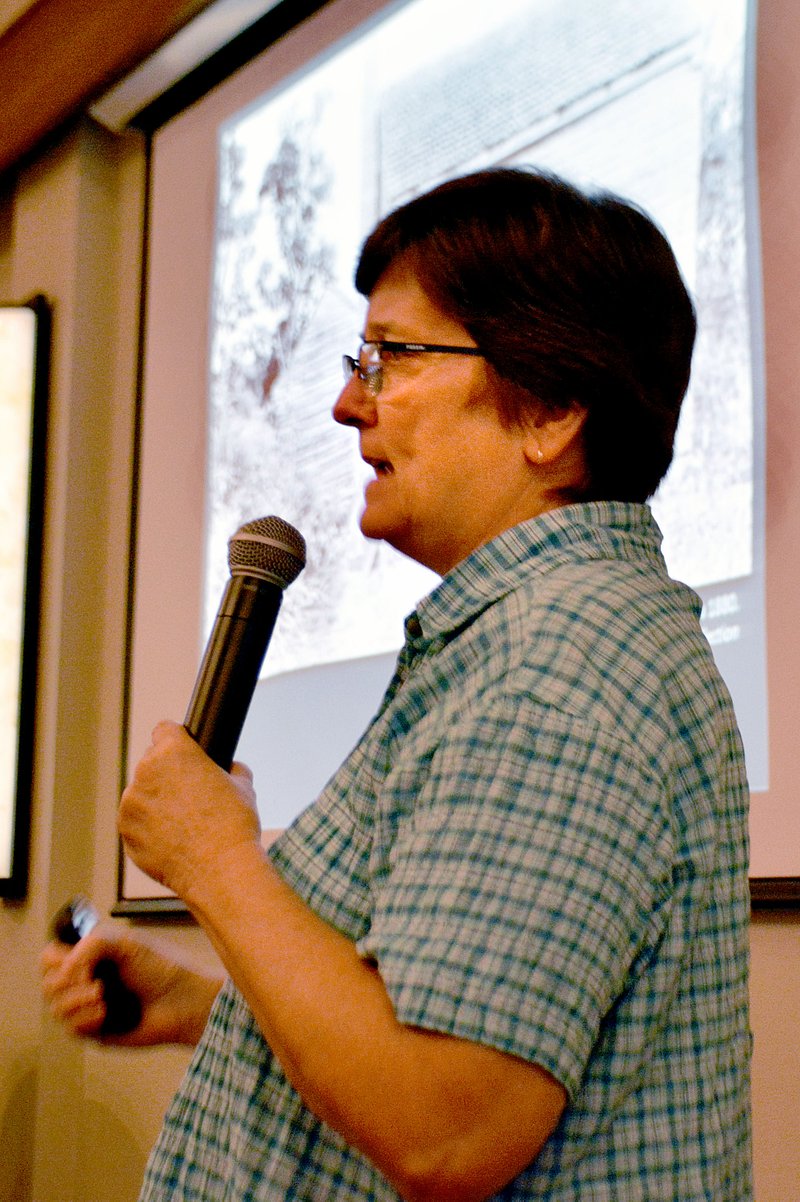Diners got to taste the history of the Ozarks during Meat, Meal and Molasses, held at 28 Springs on Thursday evening.
The food and drink tasting was a collaboration between Siloam Springs Museum, Shiloh Museum of Ozark History and the restaurant.
Executive chef Kurt Plankenhorn and head drinks enthusiast Casey Letellier worked with Susan Young of the Shiloh Museum to develop a four-course modern menu based on traditional and locally sourced Ozarks ingredients. The four courses were titled "The Woods," "The Garden," "The Pasture," and "The Field."
Between each course Young told guests about the history and traditions surrounding the ingredients and shared local photos from the past. Letellier then explained the modern take the chef took on the food and the locally sourced ingredients used on the menu.
"This is about knowing our history so that we can know who we are going to be into the future," Letellier said.
The staples of Southern diet between 1830 and 1930 were pork, corn meal and molasses, Young said. People in the Ozarks were fortunate to be able to supplement the nutritionally deficient diet with items they foraged from the wild and grew in their gardens, she said.
Menu items included hush puppies with braised venison shoulder, mustard glaze and radish slaw, a wilted green salad, molasses glazed pork loin with brown beans, collards and beet coulis, and sorghum cake. Guests were surprised to learn that candles sitting on the table were made from pork fat and could be used for dipping cornbread muffins.
Drinks included sumac tea sweetened with molasses, elderberry wine sourced from Mount Bethel winery in Altus, Dry Guy Cider from Black Apple Crossing in Springdale and peach pie moonshine.
Culture is very much defined by land and resources, Young said. Most people who arrived in the Ozarks were of Scottish or Irish ancestry and had already lived three or four generations in the United States. There was also an influence of African-American, Native American, German and Italian culture in the area.
The first pioneers to the Ozarks settled on the bottom lands or the few prairies that existed. People who arrived later lived in the "hills and hollers" that remained unsettled. The hardscrabble subsistence lead to a basic -- but sustaining -- menu that "mama could cook in the fireplace," she said.
Ozark people are commonly stereotyped as "ignorant hillbillies," Young said. "I would defy anyone to survive, to know how to build a cabin that didn't leak and eek out a living on the land like they did. They weren't ignorant hillbillies. These things took a lot of skill."
Pigs were an easy livestock for people living in the Ozarks to manage because they could be turned out to roam loose -- and pork does not require refrigeration once it is smoked or cured, Young said. In contrast, beef has to be eaten immediately.
Corn for cornbread was another staple because it was so versatile and people could grow it for themselves in the field. Cornbread was more commonly used than biscuits or wheat bread, Young said. It was used to feed livestock as well as people. Corn shucks were used to stuff mattresses and cobs were used to make dolls for children, she said.
Another use for corn was to make moonshine. While making moonshine was illegal, it was much more profitable to sell a wagon load of corn once it was made into moonshine than a wagon load of raw corn, Young said.
"It was certainly a very commonly practiced skill," she said.
Sugar cost money, but people in the Ozarks did not live in a cash economy, so molasses was the sweetener of choice, Young said. Molasses in the Ozarks, was made from sorghum cane instead of sugar cane. The terms molasses, sorghum and sorghum molasses are all interchangeable, she said.
People in the Ozarks supplemented their diet with foods they foraged in the woods, such as wild greens, venison, squirrel, fish, honey, persimmons, paw paw and berries. Most families also had a dairy cow for milk, chickens for eggs and gardens for fresh produce.
"It was a very self-sufficient way of life," she said.
Beans, peas, potatoes, black-eyed peas, turnips, pumpkins, grapes and watermelon were very common garden products. So many tomatoes were grown in northwest Arkansas that every little creek had a tomato factory next to it, Young said. In the early part of the century Benton County was the apple capitol of the world, she said.
She thanked those who attended for joining in sustaining traditional food and pointed out that food not only sustains the body but the soul.
"Food is what sustains us in the way of a meal," Young said. "Coming together like this for a meal is part of human tradition not just Ozark tradition."
General News on 09/27/2015
